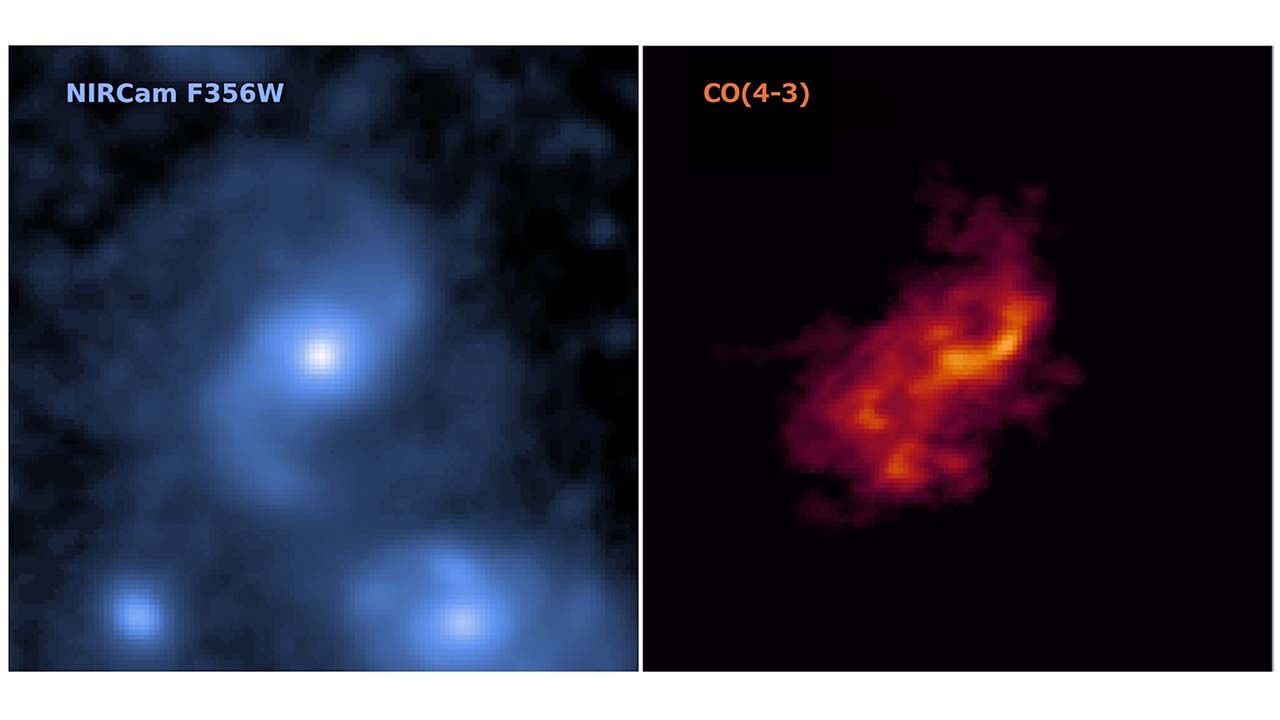ALMA Measures Evolution of Monster Barred Spiral Galaxy
| Science

Astronomers have observed a massive and extremely active barred spiral galaxy in the early Universe and found that it has important similarities and differences with modern galaxies. This improves our understanding of how barred spiral galaxies, like our own Milky Way Galaxy, grow and evolve.
Some spiral galaxies, including the Milky Way, exhibit a straight bar inside the spiral pattern. This bar structure helps channel gas towards the center of the galaxy where it can be used to form new stars. But why bars form in only about half of spiral galaxies, and how they influence the evolution of the galaxy are unanswered questions.
To study the evolution of spiral galaxies in the early Universe, researchers led by Shuo Huang, a project researcher at the National Astronomical Observatory of Japan and Nagoya University, used the Atacama Large Millimeter/submillimeter Array (ALMA) radio telescope to observe a massive barred spiral galaxy known as J0107a that existed 11.1 billion years ago. Located in the constellation Cetus, J0107a is a “monster” galaxy, meaning a galaxy growing rapidly in the early Universe by forming many new stars. Because they are located far away, it has been difficult to see the detailed structure of monster galaxies and determine what is driving this vigorous star formation. Recently the improved resolution provided by the James Webb Space Telescope has revealed spirals and even bars in some of the monster galaxies. J0107a is the earliest and most massive barred spiral galaxy known to date, so it is the best target for studying the evolution of barred spiral galaxies in the early Universe.
The team found that in J0107a the distribution and motion of gas in the bar is similar to modern galaxies. But compared to modern galaxies, the concentrations of gas are several times higher and the speed of the gas flow is faster, reaching several hundred kilometers per second. Astronomers believe that this massive influx of gas to the center will fuel signification additional star formation, helping to drive the evolution of this monster galaxy. This is the first time these features have been observed, and they were not predicted by theoretical or simulation models.
Huang comments, “We expect that the detailed information about the distribution and movement of gas gained through these observations will provide important clues for exploring not only the origins of the diversity of galaxies, but also the formation and evolution of more normal barred spiral galaxies.”
Detailed Article(s)
A fierce storm in a giant barred spiral galaxy 11 billion years ago
ALMA
This article is including a link to a article for kids.
A Monster Galaxy Way Ahead of its Time
 Space Scoop | UNAWE
Space Scoop | UNAWE
The Universe Awareness website provides children through the world with fun, easy to understand news and educational materials about the Universe. These help kids understand the size and beauty of the Universe. The “Space Scoop” section of Universe Awareness contains articles written for kids explaining current astronomy news. A Space Scoop is available for this article.